MarketWatch
The U.S. Centers for Disease Control and Prevention released updated guidance Friday providing strategies to help child care operators offer in-person care safely.
Though some child care providers closed at the outset of the pandemic, many reopened early on and have remained open for months. As of December 2020, 13% of child care centers and 13% of family child care providers were closed, according to a report from Child Care Aware, a child care advocacy group.
These organizations have already been doing much of what the CDC recommended Friday, said Nicole Garro, the director of early childhood health programs at Child Care Aware. Still, Garro said, they’re “grateful” for the new guidance. The guidelines were last updated in July, before vaccines were available and when we had a different understanding of the factors leading to the spread of COVID-19.
“This information is really important to ensuring that child care [providers] remain open and safe,” she said.
The guidance is particularly “timely,” said Mario Cardona, chief of policy and practice at Child Care Aware, because it’s coming at a moment when child care providers are slated to receive more funding. The relief package signed by President Joe Biden this week will send $24 billion for child care providers to put towards their operations.
“Child care providers stand to have a significant amount of resources to put against a lot of these mitigation measures that are being suggested by the CDC,” Cardona said.
Though many child care providers are open now, at the beginning of the pandemic when state shutdown orders were setting in, many closed, putting their livelihoods at risk. At least 35% of child care centers and 21% of family child care providers were closed in July, according to a report from that period from Child Care Aware.
Once these providers opened, the costs of operating in a pandemic environment — including personal protective equipment, more staff to decrease staff to teacher ratios, and more — has put these organizations at risk financially.
Those financial challenges are part of why Cardona described the bill signed this week as a “breath of relief.”
“For providers who are already operating on fairly thin budgets,” the extra funding required to operate during the pandemic, “either comes from the providers’ pockets or the families’ pockets,” Cardona said, “because there isn’t a system in place to provide stable support.”
Read the full article.


